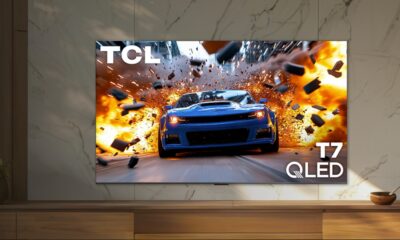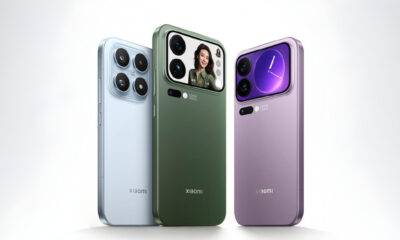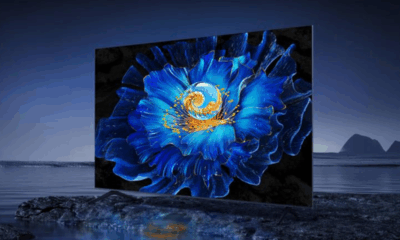Featured
What’s So Special About the TCL Z100 Soundbar?
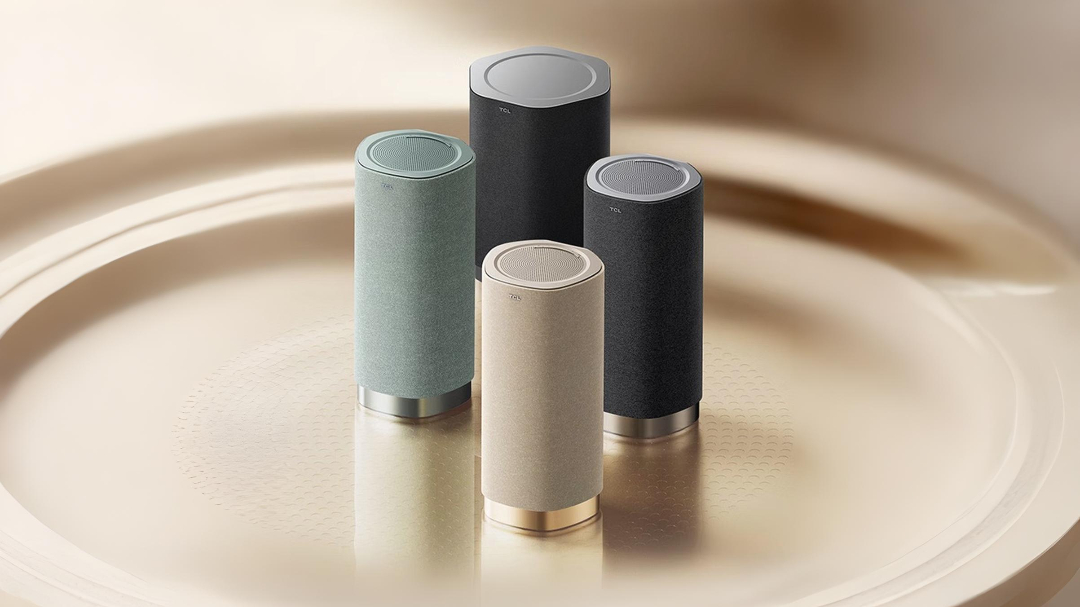
There’s no shortage of smart speakers or Dolby Atmos soundbars in 2025, but TCL seems to be carving out a new category altogether with the Z100. This isn’t your typical soundbar, nor is it just another smart speaker with Bluetooth and some branding slapped on. The TCL Z100 is a modular, wireless, Dolby Atmos-enabled speaker system that feels like it was built with future-forward living rooms in mind, specifically ones that don’t want to be tethered by HDMI cables or speaker wire.
And here’s the real kicker: it does this at a price that seriously undercuts the competition.
Reinventing the Soundbar Concept
Instead of a long, rectangular bar that lives under your TV, the Z100 is a compact standalone speaker with a unique 1.1.1 channel setup. Each unit packs four drivers, a woofer, a front-facing tweeter, and an up-firing speaker to handle overhead effects in Dolby Atmos mixes. The internals are tightly engineered, with neodymium magnetic tweeters, silk dome diaphragms, and oversized voice coils tuned for both high-frequency finesse and room-shaking volume. At peak, a single Z100 unit delivers 170W of sound and up to 94dB SPL, which already puts it in premium soundbar territory. Add more units, and the room truly comes alive.
But the real magic happens when you use multiple Z100s together. TCL lets you link up to four Z100 speakers and a dedicated Z100 SW subwoofer, creating a fully wireless 7.1.2 Atmos soundscape. No mounting requirements, no AV receiver, no symmetrical speaker placement. Just plug them in, set them around the room, and let FlexConnect do the work.
Dolby Atmos, the Easy Way
The Z100 is the first speaker to launch globally with Dolby Atmos FlexConnect, a spatial audio tech co-developed by TCL and Dolby. It scans your room using built-in mics and calibrates speaker output on the fly, no matter where each speaker is placed. The idea is to get full surround sound immersion without needing the precision of a traditional 5.1 or 7.1 setup.
That means you can scatter your Z100s across bookshelves, desks, or even different heights in the room, and still get directional sound that feels spatially accurate. It’s Atmos without the headache. And because it wirelessly syncs with TCL’s 2025 Mini LED TVs like the QM8K, QM7K, and QM6K, the whole setup is HDMI free and app free. Everything just works.
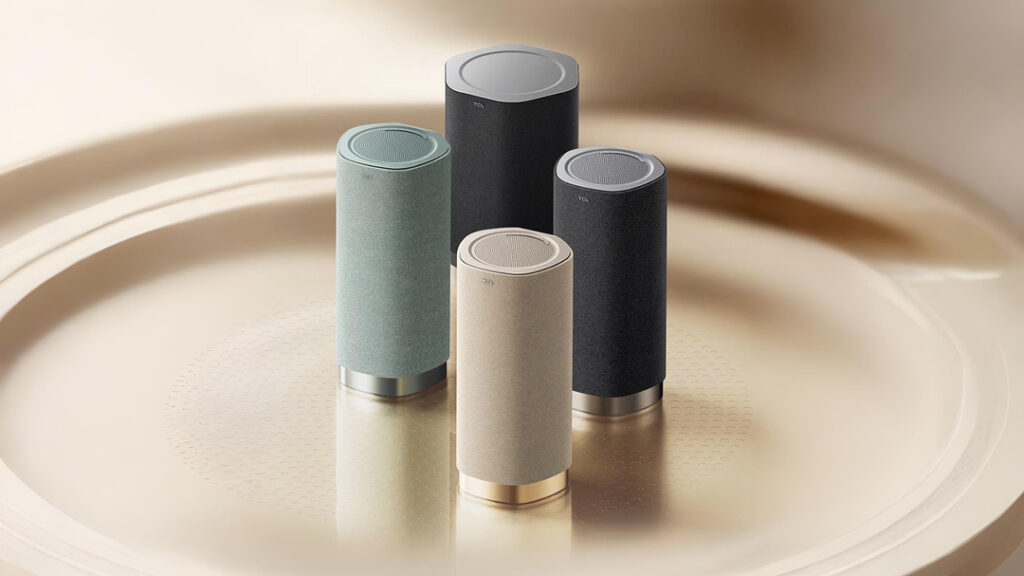
Designed to Be Seen (and Heard)
The Z100 looks nothing like your typical audio gear. The shell is anodized aluminum with a soft matte finish, while the grille follows a starburst pattern that’s both futuristic and functional. TCL says the three available colors, grey, gold, and cyan, are inspired by nebulae, which feels appropriately cosmic for a speaker built around spatial sound.
Every detail, from the fabric mesh to the cable management system tucked into the base, feels thought through. And if you’d rather not clutter your shelf, it supports wall and stand mounting too (though the stand is sold separately).
Specs That Matter
It’s easy to rattle off numbers, but TCL’s choices here are deliberate. Bluetooth 5.3 ensures low-latency connections with mobile devices, and OTA firmware updates mean the Z100 could get smarter over time. The optional subwoofer (Z100 SW) adds 130W of bass power and goes as low as 45Hz, using a large iron-core magnet and CONEX spider material for deep, punchy lows. That turns the Z100 from a high-end TV speaker replacement into a genuinely cinematic system.
The entire stack is scalable. You can start with one Z100, add a second for stereo, throw in a third for Atmos, then add a subwoofer when you want to feel the rumble. Or go all out and run four Z100s and the subwoofer for a full surround setup with up to 18 drivers working together.
The Bigger Picture
If TCL’s pitch sounds familiar, it’s because we’ve seen similar efforts before, like Sony’s $2,500 Bravia Theater Quad. But the Z100 aims for a broader market. At 1,499 yuan (about $206), it’s priced dramatically lower than most Atmos-ready wireless speakers. And TCL is planning global availability this summer, starting in the US and Europe.
This isn’t just TCL flexing its speaker manufacturing muscle. It’s TCL signaling that spatial audio shouldn’t be a luxury reserved for massive living rooms or deep bank accounts.
The Z100 is a bet on the future of home entertainment, one that’s wireless, modular, and sounds damn good even before you start thinking about building a full system around it.
In related news, the Redmi K80 Ultra will feature an OLED display sourced from TCL CSOT and Tianma, while TCL has launched the NXTPAPER 14 in the US with a paper-like display and a 10,000mAh battery.
Featured
What’s So Special About the RayNeo Air 4 AR glasses?

RayNeo has officially launched the Air 4 series in China, bringing major improvements in display, performance, audio, and comfort. The lineup includes the standard Air 4 and the premium Air 4 Pro. While its predecessor, the Air 3s Pro, continues to sell globally, the Air 4 series has just debuted in China and is expected to expand internationally in 2026. Let’s take a closer look at what makes this new generation of AR glasses stand out.
World’s First HDR10 AR Glasses
The RayNeo Air 4 is the first AR glasses product to support HDR10, setting a new benchmark for display technology in the category. The glasses include AI-powered SDR-to-HDR conversion, which upgrades non-HDR content to HDR quality on the fly. This enhancement improves contrast, deepens blacks, and boosts color depth without user intervention. The 1200-nit peak brightness ensures clarity even in well-lit environments.
Vision 4000 Display Processor
Both the Air 4 and Air 4 Pro use the Vision 4000 image-processing chip, co-developed by RayNeo and Pixelworks. The chip handles real-time tone mapping, white balance adjustment, and contrast enhancement. The Air 4 Pro supports 10-bit color output, delivering 10.7 billion colors, which results in a 64x improvement in tonal depth over standard 8-bit displays. This processing power ensures that image quality remains consistent across varied content and lighting conditions.

Micro-OLED Display and 3D Support
The glasses use 0.6-inch dual-layer Micro-OLED panels with support for 1920×1080 resolution in 2D and 3840×1080 in 3D mode. They simulate a 135-inch virtual screen viewed from 4 meters, suitable for streaming, gaming, or multitasking. With a 200,000:1 contrast ratio and 98% DCI-P3 color coverage, the display produces rich blacks, vibrant highlights, and accurate tones. The 120Hz refresh rate supports fluid motion during gameplay and high-frame-rate video.
TCL Optical Engine
RayNeo integrates TCL’s second-generation Peacock Optical Engine 2.0 across both models. The optics system benefits from TCL’s display calibration expertise and pushes color coverage up to 145% sRGB. The engine supports precise color tuning that meets the needs of video professionals and content creators. Visuals remain accurate, natural, and free from color drift, even in high-contrast scenes.

Bang & Olufsen Audio
The Air 4 series introduces a four-speaker audio system co-engineered with Bang & Olufsen. It supports spatial 3D surround sound, uses large polymer diaphragms, and employs a proprietary DAC algorithm to maintain clarity and balance. The sound-guiding fins reduce leakage by up to 80%. Whisper Mode focuses sound into the ears, ideal for quiet environments. The Air 4 Pro adds Surround Mode, expanding the soundstage for immersive content.
Comfort and Fit
RayNeo maintains a lightweight design at 76 grams across both models. The frame uses a balanced 46.7:53.3 front-to-back weight ratio to reduce strain on the nose and ears. The temples offer nine levels of adjustment, while the nose pads include three positioning levels, allowing the headset to fit a wide range of face shapes. Prescription lens support adds flexibility for nearsighted users.
Compatibility and Charging
The Air 4 series connects to smartphones, tablets, laptops, and gaming consoles, including the upcoming Nintendo Switch 2, using USB-C or HDMI adapters. The glasses support up to 100W Power Delivery passthrough charging, allowing users to continue viewing or gaming while their device charges in the background. This makes them suitable for long usage sessions without power interruptions.
In related news, global TV shipments fell below 50 million units in Q3 2025, marking a 4.9% year-over-year decline, and Redmi’s product manager stated that RGB OLED represents the future of display technology.
Featured
What’s the Best Value for Money 65-inch TCL TV in 2025?

In today’s competitive television market, finding the perfect balance between premium features and affordable pricing has become increasingly challenging. For 2025, TCL has emerged as a standout manufacturer offering exceptional value in the 65-inch TV category, particularly with their QD-Mini LED lineup that delivers flagship-level performance without the flagship price tag. Whether you’re shopping for your first 65-inch TCL TV or upgrading from an older model, the current lineup presents compelling options for every budget.
What Defines “Value-for-Money” in 2025?
The modern definition of value extends far beyond just having the lowest price. Today’s value-conscious consumers expect several key features in a TCL 65 inch TV: strong HDR performance with high peak brightness for excellent daytime viewing, modern gaming capabilities including 120-144Hz panels with HDMI 2.1/VRR/ALLM support, quality contrast ratios with effective local dimming for deep blacks, a robust smart platform with ongoing software support, and competitive pricing that doesn’t sacrifice essential features.
TCL QM7K: The Sweet Spot Champion
After extensive market analysis and expert reviews, the TCL QM7K (65-inch) emerges as the best overall value for most buyers in 2025. According to our analysis, the QM7K offers the optimal performance-to-price ratio.
Priced at $999 but normally available around $850 at major retailers, the QM7K delivers impressive specifications that rival TVs costing significantly more. The television features TCL’s advanced QD-Mini LED technology with up to 2,500 local dimming zones, HDR peak brightness of 2,600 nits, and a native 144Hz refresh rate with Game Accelerator 288 for responsive gaming.
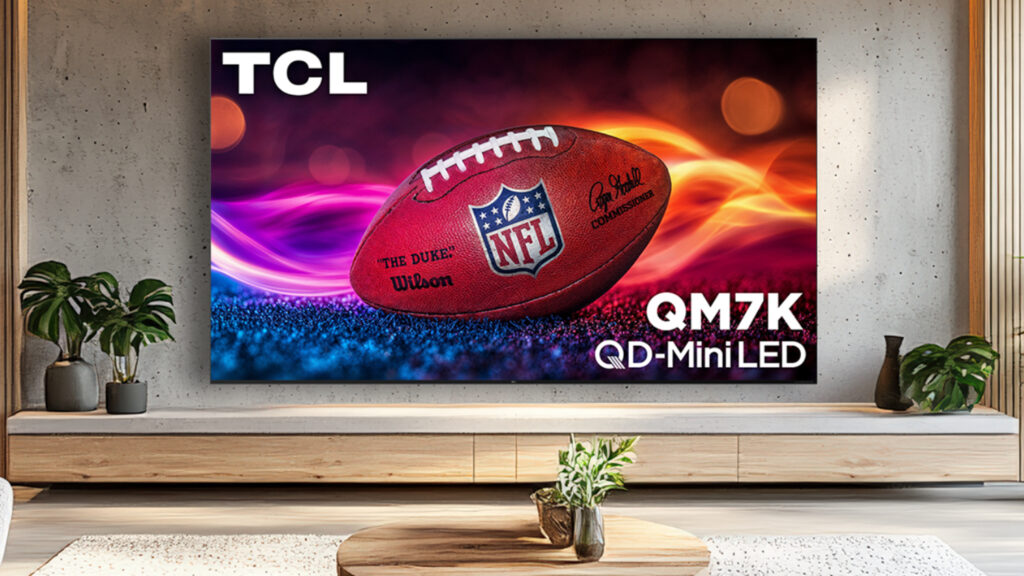
The Competition: QM8K vs QM6K
While the flagship QM8K is priced at $1,499, this premium model commands nearly double the QM7K’s current street price. The QM8K does offer superior peak brightness (up to 5,000 nits) and more local dimming zones (3,800+), but these improvements provide diminishing returns for most viewing scenarios.
On the budget end, the 2025 TCL QM6K right now is our choice for the best value TV in 2025, offering Mini-LED technology at entry-level pricing around $600-700. However, the QM6K makes notable compromises in peak brightness and dimming zone count that become apparent during demanding HDR content.
Why the QM7K Hits Different
The QM7K’s appeal lies in its comprehensive feature set without major compromises. You get TCL’s latest CrystGlow HVA panel technology for enhanced contrast, Bang & Olufsen audio tuning for superior sound quality, Google TV smart platform with regular updates, and comprehensive gaming features including AMD FreeSync Premium Pro support. The television also includes premium design elements like ultra-slim construction and seamless wall mounting capabilities.
For most consumers, the QM7K provides 90% of the flagship QM8K experience at roughly 60% of the cost. The brightness difference (2,600 vs 5,000 nits) is less noticeable in typical home environments, while the core Mini-LED local dimming technology remains equally impressive across both models.
The Bottom Line
In 2025’s competitive landscape, the 65-inch TCL QM7K represents the best value proposition for buyers seeking premium TV performance without premium pricing. For anyone shopping for a TCL 65 inch TV, this model delivers flagship-level features, modern gaming support, and impressive picture quality that satisfies both casual viewers and enthusiasts. At current sale prices under $900, it provides exceptional value that’s hard to match. While budget buyers might consider the QM6K and those wanting absolute best performance should look at the QM8K, the QM7K occupies that crucial middle ground where performance meets affordability most effectively.
TCL 65-Inch Class QM7K Series QD-Mini LED 4K UHD Google Smart TV
- 65-inch QD-Mini LED 4K Ultra HD display
- 2,500 local dimming zones, HDR2600 brightness
- 144Hz refresh, VRR, ALLM, FreeSync Premium Pro
- Google TV with Dolby Atmos and B&O audio
In related news, we recently broke down TCL’s SQD-Mini LED technology, highlighting why it sets a new benchmark for Mini LED displays.
Featured
TCL SQD-Mini LED Tech Explained: New Benchmark for Mini LED Displays

TCL SQD-Mini LED (Super Quantum Dot Mini LED) technology is the company’s most ambitious evolution of Mini LED to date. Debuting with the flagship X11L series, this new display tech is designed to overcome the limitations of conventional RGB-Mini LED systems by delivering better color accuracy, more efficient light control, and higher brightness, all while allowing for ultra-slim TV designs.
In traditional RGB-Mini LED setups, backlighting is achieved using red, green, and blue LEDs grouped together to form white light. While this allows for rich colors, it comes with downsides—namely, the potential for color bleeding, limited zone density due to complex layouts, and inconsistent performance when rendering mixed-color scenes.
SQD-Mini LED solves this by switching to a single-type blue LED light source, which passes through a high-density layer of upgraded quantum dots. These dots convert the blue light into red and green wavelengths, which are then blended to produce full-spectrum white light. The result is purer, more stable colors with minimal distortion.
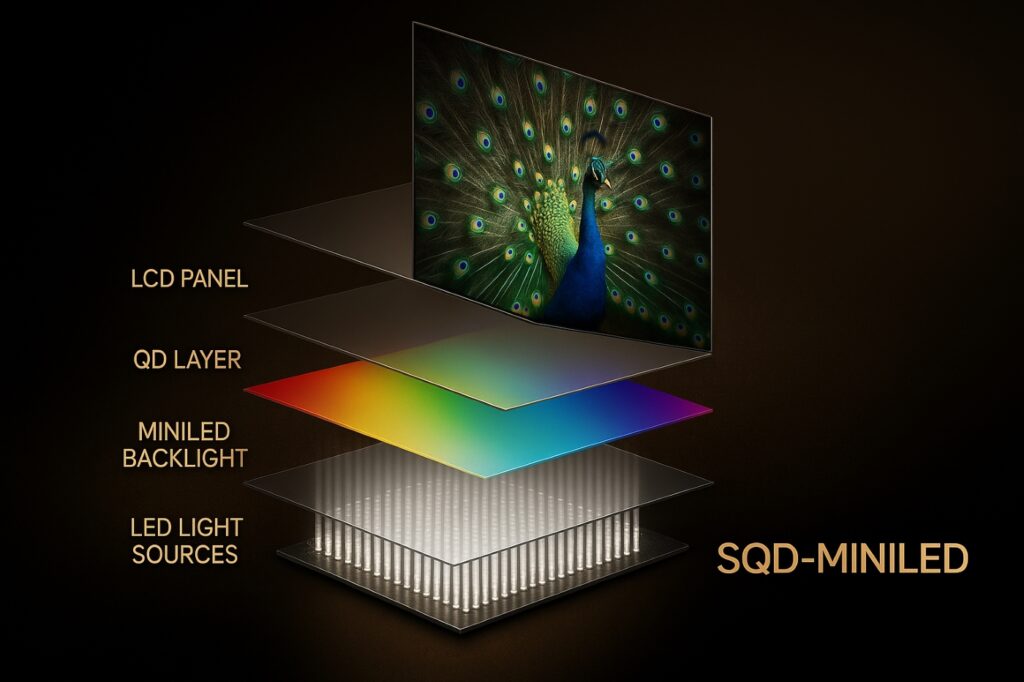
Unlike RGB-Mini LED, which achieves only localized high color gamut (often peaking at around 97% BT.2020), TCL’s SQD-Mini LED panel delivers a true global high color gamut, reaching 100% BT.2020 across the entire screen. It maintains consistent accuracy whether the scene is monochromatic or multi-colored. Because each pixel’s color generation process remains uniform, there’s no shift or compromise during complex scenes.
This architecture also makes the backlight more compact and thermally efficient. A single chip can replace a cluster of three RGB LEDs, allowing more dimming zones within the same area. In the case of the X11L, the 98-inch version reaches 20,736 zones—an industry-leading figure. Brightness is another strong point, with peak levels hitting 10,000 nits, ideal for true HDR playback.
SQD-Mini LED also enables thinner TVs. The X11L is just 2cm thick, making it the slimmest Mini LED TV ever. In short, TCL’s SQD-Mini LED is not just a refinement of Mini LED; it’s a full-stack rethinking designed to rival OLED in color precision while surpassing it in brightness and durability.
In related news, we recently explored TCL’s strategy to dominate the Indian TV market in 2025. Check it out as well.

